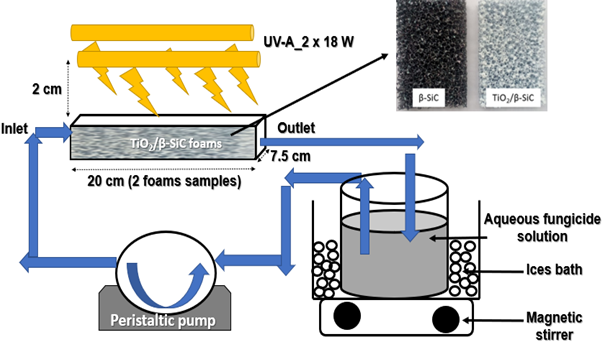Found 1 results
Open Access
Article
05 July 2023Photocatalytic Efficiency of Suspended and Immobilized TiO2 P25 for Removing Myclobutanil, Penconazole and Their Commercial Formulations
Fungicide application in viticulture is a major source of surface and groundwater contamination. It is therefore essential to find solutions to stop this environmental pollution. Heterogeneous photocatalysis is an advanced oxidation method for the degradation and mineralization of organic pollutants in water. TiO2 P25 photocatalyst in suspension has been used for removing the fungicides Myclobutanil and Penconazol, and their respective commercial formulations Systhane and Topas, in contaminated water. The apparent kinetic constants kapp of fungicides removal over 30 min batch treatment was higher for a mixture of pure molecules of Myclobutanil and Penconazol than for a mixture of their commercial formulations (17.5 × 10−3 by comparison with 10.3 × 10−3 min−1 for Myclobutanil, and 10.0 × 10−3 by comparison with 2.80 × 10−3 min−1 for Penconazol). TOC removal constants kTOC were similar for the two mixtures, due to the presence of mineral and organic additives in the commercial formulations. To easily recover the photocatalyst after fungicide removal, TiO2 P25 has been supported on β-SiC foam. Fungicides degradation was lower with supported photocatalysts than with the suspension of photocatalyst nanoparticles (NPs) because of a lower concentration of active sites on the supported photocatalyst than in the catalyst suspension. However, catalyst recovery and reuse after fungicide removal is obviously easier with TiO2/β-SiC material than with a suspension of TiO2 which requires long and expensive filtration operations.
